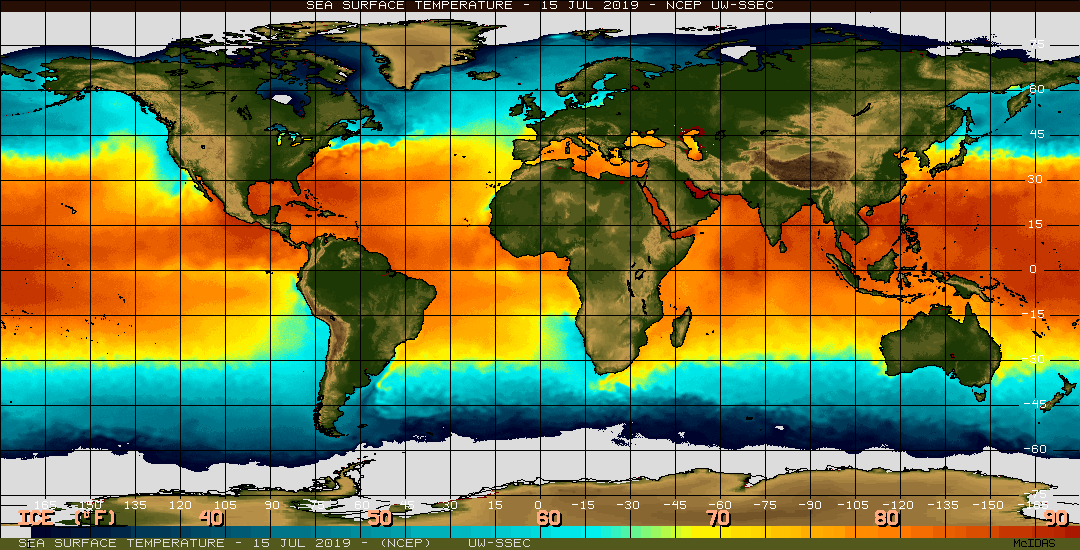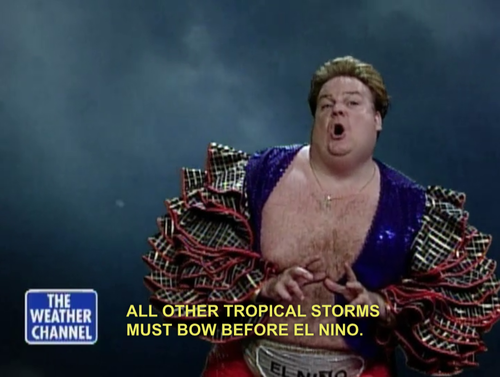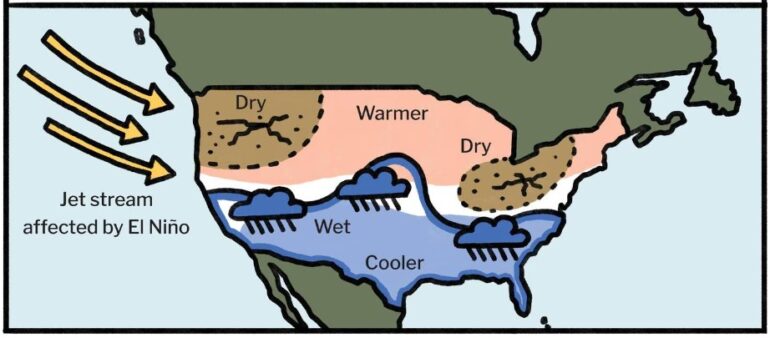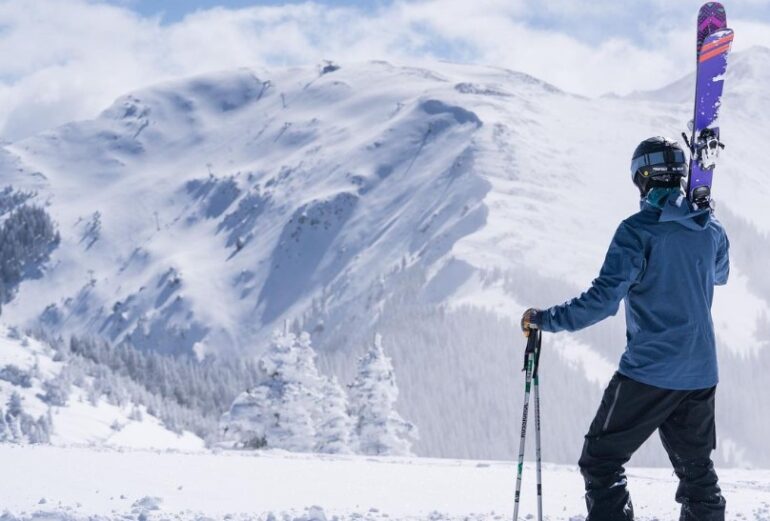
Out Of Bounds – E264 – Alyssa Gonzalez and Treehouse Cyclery
Out Of Bounds – E264 – Alyssa Gonzalez and Treehouse Cyclery Hello, hello, hello and welcome back to a brand-new episode of The Out Of Bounds podcast, right here on The […]


You have probably heard the term El Niño thrown around quite a bit. Get used to it, because you are going to be hearing about it a lot more in the coming weeks and months. For those unfamiliar, El Niño is Spanish for “The Niño”. Fun Fact: the term El Niñomeans The Little One. It was coined by fisherman who noticed this shift in weather impacts arrival around Christmas time. But it actually starts much earlier than that and The Out of Collective is here to get into all that and help explain what exactly it is, why we care, and if this year’s El Niño will be the biggest ever?!
I’m no weatherist so I will try and dumb it down for everyone including myself. El Niño is a cyclical weather pattern that is based on the cooling and warming of waters in the Pacific Ocean along the equator. (El Niño is warmer waters at the equator and it’s sister system La El Niña is a cooling of these same waters). Just like the mighty mitochondria is the powerhouse of a cell, our oceans power our weather. Since the Pacific is so large (2x the size and volume of the Atlantic) effects from these changes will be felt around the world. The primary impact traditionally is that the jet stream shifts south bringing wetter and cooler weather to those areas in it’s path. But it doesn’t just move storms south, it also affects sealife migration patterns, winds, waves and pretty much every aspect of life on the planet.

Well, serious El Niños are serious business. They aren’t just a slight change in the ten day forecast. The climate impacts from an El Niño cause extreme changes in weather across the globe. It usually leads to major flooding and land and mudslides in the the southern US and South America. Simultaneously it also sends warmer drier weather leading to sever draught and wildfires in Canada, Australia and Southeast Asia. Other than causing deaths and billions of dollars in damage ($46,000,000,000 in the US alone in 2016; the last major El Niño) why do we care?
Skiing. We want to go skiing. And we want to know where Mr. Niño is sending the pow. Sure, it’s selfish and shortsighted but sometimes you have to look at the detachable high-speed quad as half full not half empty. El Niño usually means a southern shift of snowfall into areas like New Mexico (Taos) and Southern Colorado (Telluride & Silverton). Historically, the Pacific Northwest sees less snowfall as does Canada. The Northeast and California also typically see an increase in snowfall. However, there are always exceptions to these patterns and it can also come in huge bunches followed by prolonged dry spells. The southern jetstream often means warmer storms so sometimes we get dreaded rain when it damn well should be snow. Being a wily veteran skiing of New England for almost four years now, I’ve learned mother nature will screw us if she can, no matter what.

An El Niño season is officially named when the water temps in question rise 0.5 degrees Celsius over their historic average. There have been four super El Niño’s in recorder history where temps are 2.0 degrees above average. Most recently this occurred in the 2015-2016 cycle when temps were 2.3 C over. This year’s forecasters called this El Niño forming almost two months earlier than normal. That gives it room and time to grow and strengthen even more. Climatologists current estimates have it potentially clocking total sea temps at 2.5-2.7 Celsius over the mean. We’re already seeing impacts in Canadian wildfires. And since it’s only July things will likely get worse before they get better.
Biggest ever? Who knows? My local weather guy can’t tell me when it’s going to rain even when it is raining. But buckle up, odds are it’s definitely maybe going to be big, probably sloppy and quite possibly even one for the record books!
Tagged as: Weather, El Niño, skiing.

Out Of Bounds – E264 – Alyssa Gonzalez and Treehouse Cyclery Hello, hello, hello and welcome back to a brand-new episode of The Out Of Bounds podcast, right here on The […]

The Pursuit – EP169 – Just Say it Somebody’s gotta address it, so let’s discuss it. Imagine if we were all just people trying to make our way around this […]

Out of Bounds – E293 – Cody Cirillo Goes for a Long Bike Ride Hello, hello, hello and welcome to a brand-new episode of The Out Of Bounds podcast, right […]

The Pursuit – EP168 – The Tour The Tour de France has begun. The XGL has teamed up with a prominent ski organization. Also, Specialized has announced a new bike, […]
Adam X Sauerwein June 26, 2024
The Pursuit – EP167 – Introducing The League With two major sporting announcements in the past month, AdamX sat down to discuss the XGames League and Shaun White’s new snow […]
© 2022 Out Of Collective
| Cookie | Duration | Description |
|---|---|---|
| cookielawinfo-checkbox-analytics | 11 months | This cookie is set by GDPR Cookie Consent plugin. The cookie is used to store the user consent for the cookies in the category "Analytics". |
| cookielawinfo-checkbox-functional | 11 months | The cookie is set by GDPR cookie consent to record the user consent for the cookies in the category "Functional". |
| cookielawinfo-checkbox-necessary | 11 months | This cookie is set by GDPR Cookie Consent plugin. The cookies is used to store the user consent for the cookies in the category "Necessary". |
| cookielawinfo-checkbox-others | 11 months | This cookie is set by GDPR Cookie Consent plugin. The cookie is used to store the user consent for the cookies in the category "Other. |
| cookielawinfo-checkbox-performance | 11 months | This cookie is set by GDPR Cookie Consent plugin. The cookie is used to store the user consent for the cookies in the category "Performance". |
| viewed_cookie_policy | 11 months | The cookie is set by the GDPR Cookie Consent plugin and is used to store whether or not user has consented to the use of cookies. It does not store any personal data. |
Post comments
This post currently has no comments.